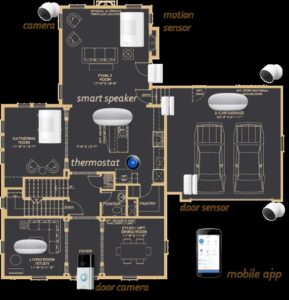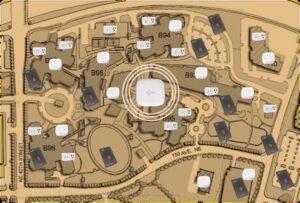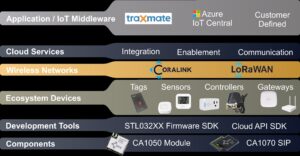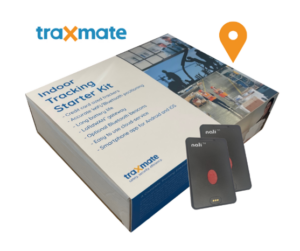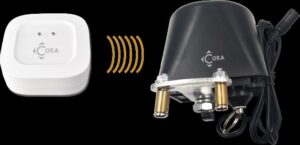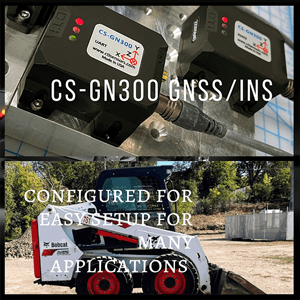By Brian Salisbury and Michael B. Mathews
Wirelessly connected people and devices are fundamentally changing the way we communicate and manage information in the Business enterprise. Once limited to devices like the smartphone, wireless connectivity is fast becoming a popular means to connect all sorts of Internet of Things (IoT) devices. Whether they are sensors, smart devices (e.g., vehicles, buildings, switches, actuators, or mobile equipment), or wearables, by 2025 there will be more than 30.9 billion IoT devices[1]. A significant portion (perhaps most) of these devices will connect wirelessly due to the physical impracticality of running wires to each device. Currently, there are three primary choices for wireless data connectivity:
- Regional Wireless (Cellular)
- Short Range Radio (Wi-Fi / Bluetooth / BLE)
- Low Power Wide Area Network (LPWAN)
While each method has its advantages/disadvantages depending on the application, this article focuses on LPWAN in the Business enterprise and highlights why it can provide an optimal approach.
Wireless IoT and Its Challenges for the Enterprise
Short range wireless infrastructure dominates today’s Business enterprise, given the need to support the wide variety of Wi-Fi and Bluetooth devices currently in use by the workforce. At first thought, it might seem an ideal option to use that existing infrastructure to connect Wireless IoT for the enterprise. Certainly, given the explosive growth in home consumer IoT solutions like those offered by Ring® and Nest®, a short-range wireless approach can leverage existing, cost-effective infrastructure that is available in the home market. Short-range wireless is also ideal for high bandwidth communications needed by some devices including phones and video cameras. However, it is not needed for many IoT devices that have minimal data communication requirements like temperature sensors, lighting control, location reporting, etc. Also, unlike home consumer applications which may cover a few hundred square metres., a larger enterprise may have needs to cover much larger areas both indoors and outdoors potentially in the millions of square metres.
Figure 1 – Short-range Wi-Fi/Bluetooth/BLE Wireless works well for home consumer applications and when communication ranges are less than 50 m.
In practice, short-range wireless has an effective range typically less than 50 metres indoors, whereas LPWAN can reliably range up to 500 metres. To cover the same area using short-range wireless versus LPWAN could require 100 times the number of gateways or employ complicated mesh techniques, which can introduce delay and impact network performance. Because of this, scaling short-range wireless IoT solutions to support the large-scale enterprise is often impractical considering the multiple floors and buildings comprising a campus where IoT devices may be deployed well out of short-range coverage.
For IoT sensors, wearables, and connected devices, LPWAN is very attractive as a connectivity solution. LoRaWAN® (Long Range Wide Area Network) is one communication standard that demonstrates some of the capabilities needed. Currently, there are LoRaWAN IoT devices that are targeting both consumer and enterprise applications. The standard protocol provides secure, long-range, low-power communications with a maximum range of more than 1.5 kilometres under the right conditions. However, LoRaWAN has been shown to have some significant limitations that have hindered its adoption.
These limitations relate to communication delays and the number of devices that low-cost gateways can support. Testing has shown that typical low-cost gateways can only support about 80 LoRaWAN devices concurrently before they become congested[2]. As for delay, low-power devices[3] can take anywhere from several seconds to hours to respond to commands from the network. This delay can be intolerable in mission critical applications, where seconds count. High end gateways that can support more devices can cost thousands of dollars, which makes them impractical for a typical private enterprise application.
A better LPWAN protocol is needed that addresses the scalability and delay limitations of standard LoRAWAN .
Coralink™ Scalable and Reliable Communications
Coralink is an alternative communications LPWAN protocol based on the same underlying technology used by LoRaWAN. Both use the same LoRa® radio engine but employ different signaling methods. Coralink benefits from patented techniques that greatly improve channel capacity and performance with respect to LoRaWAN:
- Increased scalability for low-cost gateways supporting hundreds of devices
- Reduced delays for low-power devices to less than one second typically[4]
- Peer to peer messaging between devices
With these improvements over LoRaWAN, a low-cost gateway can cover a large area, significantly reducing deployment costs. A reliable/redundant solution would incorporate several gateways to ensure coverage and resiliency in case of a gateway failure.
Figure 2 – Low-cost gateways supporting the Coralink protocol can cover wide areas including multiple floors and buildings. A few gateways can provide reliable coverage for many hundreds, potentially thousands, of devices across an entire campus.
The reduced delay and support for peer-to-peer messages further improves communication reliability in that Coralink connected devices can coordinate events and activities without needing to communicate with the network cloud application. As a result, mission critical functions can continue to operate even when disconnected from the Internet. Delay is further reduced as latency communicating with the network is minimal.
Codepoint Cora™ Infrastructure, Devices, and Components
While Coralink provides the fundamental elements for achieving reliable LPWAN communications suitable for enterprise applications, Cora also provides the elements needed by solution developers and device manufacturers to create and deploy fully functional enterprise Wireless IoT applications. Working together with a growing ecosystem of partners, Codepoint is developing Coralink based infrastructure, devices, and components.
As shown in the figure below, Cora solution elements comprise cloud services infrastructure, ecosystem devices, and Components/Development Tools. Solution providers can integrate directly with Cora services or use the integration features, which can route data through popular middleware solutions including Microsoft Azure IoT Central.
Figure 3 – Codepoint Cora offers solution providers ready to deploy infrastructure and devices, which can be easily configured and integrated with existing applications and well-known IoT middleware providers. Device manufacturers can leverage Cora hardware components and SDKs to connect with any Coralink based network.
Connecting the Business Enterprise
Whether monitoring critical business processes or tracking the flow of equipment and personnel to improve efficiency, wireless connectivity with a more cost-effective approach than can be achieved with short-range or regional wireless solutions can enable greater benefits from IoT. Low-cost, low-power devices can be deployed in large campuses reaching out to the boundaries and across multiple floors including basements. This can be applied to address a wide variety of business use cases two of which are mentioned below.
Indoor/Outdoor Tracking
Many businesses need to know where assets and personnel are located to manage their operation effectively. While there are many options for tracking tags including GPS, BLE, and others, tracking tags designed specifically to support indoor/outdoor location within an enterprise campus are the best choice. Offering room level accuracy, such tags can perform 6000+ locates on a single charge with a battery life of more than 1.5 years if needed. The size of a credit card, the tag can be mounted to equipment or used as a badge.
Figure 4 Traxmate is a Codepoint partner using the Nali N100/N110 tracking tags as part of their Indoor Tracking Starter Kit.
Leak Detection and Damage Mitigation
Water heaters and boilers are notorious for creating significant damage when they leak or fail. Codepoint partner YoSmart, Inc is currently using these devices in its smart home solutions. With an update to the software in this home solution, it will be suitable for enterprise deployment.
Figure 5 – Water Leak Sensor paired with a valve controller can stop water leaks before they cause serious damage.
Summary
LPWAN has a significant role to play in the business enterprise connecting low-power, low data-rate devices. With its long-range capabilities, the infrastructure costs are considerably less than either short-range or regional cellular solutions when applicable.
Upgrading to an enhanced protocol such as Coralink enables the creation of reliable LPWAN based network solutions that can meet the reliability, security, and privacy requirements for the business enterprise. Implementors have the choice to manage their own data and avoid closed systems, which is important where flexibility and data privacy are a real concern. Further, the responsiveness and peer-to-peer capabilities enhance the robustness of the solution, which can continue to function even when disconnected from the Internet or private cloud.
[1] Tech Jury (PwC, Business Insider, IoT Analytics, Gartner, Intel, Statista).
[2] Easylinkin May 2021 network testing results.
[3] LoRaWAN Class A devices wake up and poll for downlink messages, and typically do so infrequently to conserve power.
[4] Coralink Class D signaling mode is an extremely efficient method of checking for downlink messages that has minimal limited on device battery life.





